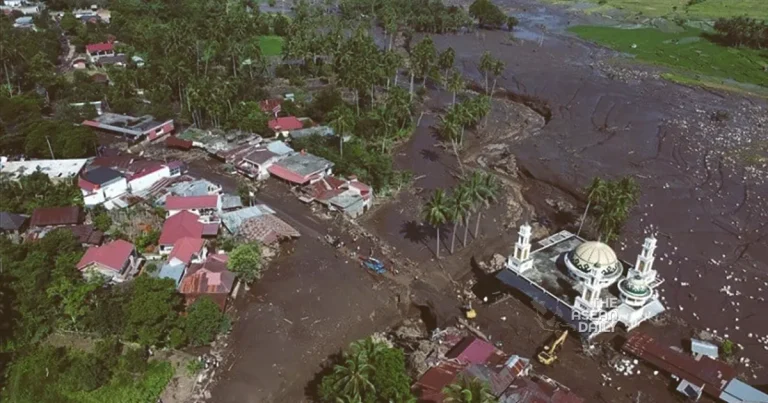15-5-2024 (JAKARTA) In the wake of the devastating flash floods triggered by volcanic activity on Indonesia’s Mount Marapi, experts are urging residents living on the slopes of Sumatra’s most active volcano to be better prepared against natural disasters. The recent tragedy, which claimed at least 58 lives and left 35 others missing, has highlighted the need for improved evacuation routes, weather modification techniques, and better land use policies at the provincial government level.
On the evening of Saturday, May 11th, heavy floods, caused by dozens of eruptions over the past five months, swept away tonnes of volcanic ash that had accumulated on the slopes of Mount Marapi. The surges of cold lava, water, and rock flowed down multiple sides of the volcano, known locally as the “Mountain of Fire.” The powerful floods affected virtually all two dozen rivers with headwaters on Mount Marapi, knocking down bridges, cutting off roads, and burying farmlands and residential areas under thick layers of mud and debris.
Officials from the Indonesian Volcanology and Geological Hazard Mitigation Centre (PVMBG) had been warning residents for months about the potential risk of a flash flood due to the accumulation of volcanic material near Marapi’s crater. They had also issued a map highlighting the likely flood-affected areas. Additionally, the Indonesian Meteorology, Climatology and Geophysics Agency (BMKG) had warned residents about the possibility of heavy showers in the areas around the volcano from May 6 until May 22.
Despite these warnings, residents did not stay clear of the riverbanks when rain hit the volcano for hours on May 11. “Warnings about the risk of flash floods had been issued for quite some time. There is even a map of where the flash flood will affect. Deaths should have been avoided,” said Dr. Eko Teguh Paripurno, a disaster mitigation expert from Yogyakarta’s National Development University (UPN).
Overdevelopment and deforestation on Mount Marapi and along the riverbanks also contributed to the severity of the disaster, according to Indonesian National Disaster Mitigation Agency (BNPB) spokesman Mr. Abdul Muhari. He noted that riverbanks near Mount Marapi continued to be developed into residential, commercial, and recreational areas, despite the potent danger of cold lava and flash floods.
Vulcanologist Dr. Surono emphasized the need for the West Sumatra government to rethink its land use policies, stating that people should not be living so close to the rivers near the frequently erupting volcano.
Chief of Indonesia’s meteorology agency, Professor Dwikorita Karnawati, suggested the use of cloud seeding, a weather modification technique that improves a cloud’s ability to produce rain, to force rain to fall on safer, low-lying areas along West Sumatra’s coasts instead of the upper slopes of Marapi.
Experts also highlighted the importance of disaster preparedness among communities living in the vicinity of active volcanoes. Dr. Surono stressed the need for residents to truly understand the risks and know how to mitigate them, citing examples of communities near other active volcanoes that have established networks of hand-held radio transceivers to inform one another of potential dangers.
Dr. Eko of UPN Yogyakarta echoed the sentiment, emphasizing the need for improved disaster preparedness and understanding among residents about when and where to evacuate to prevent further loss of life in the event of future disasters.




